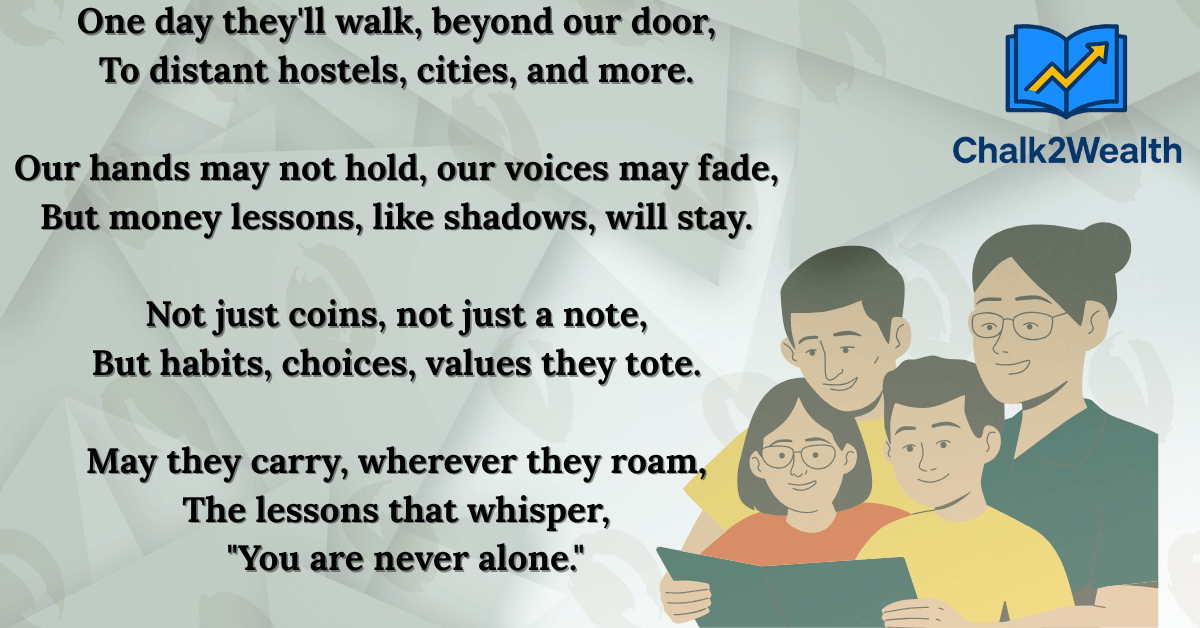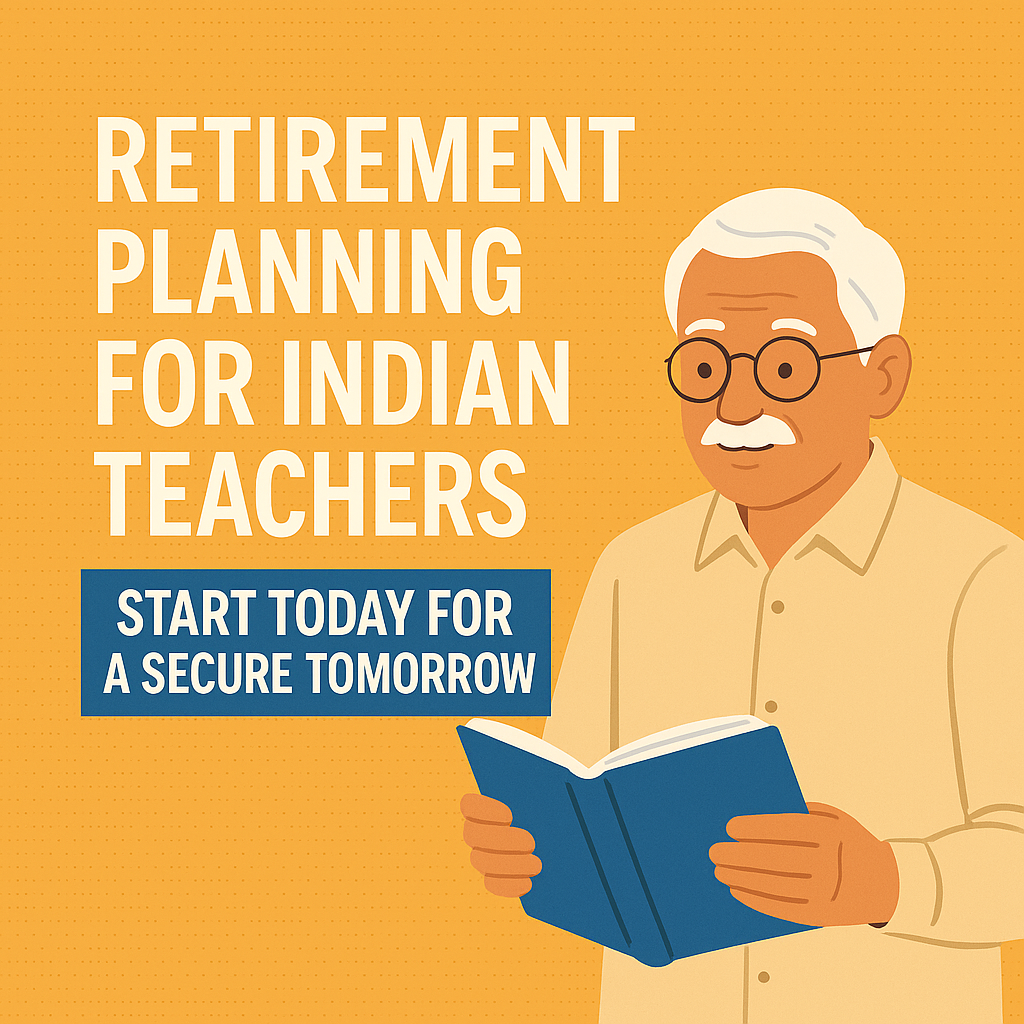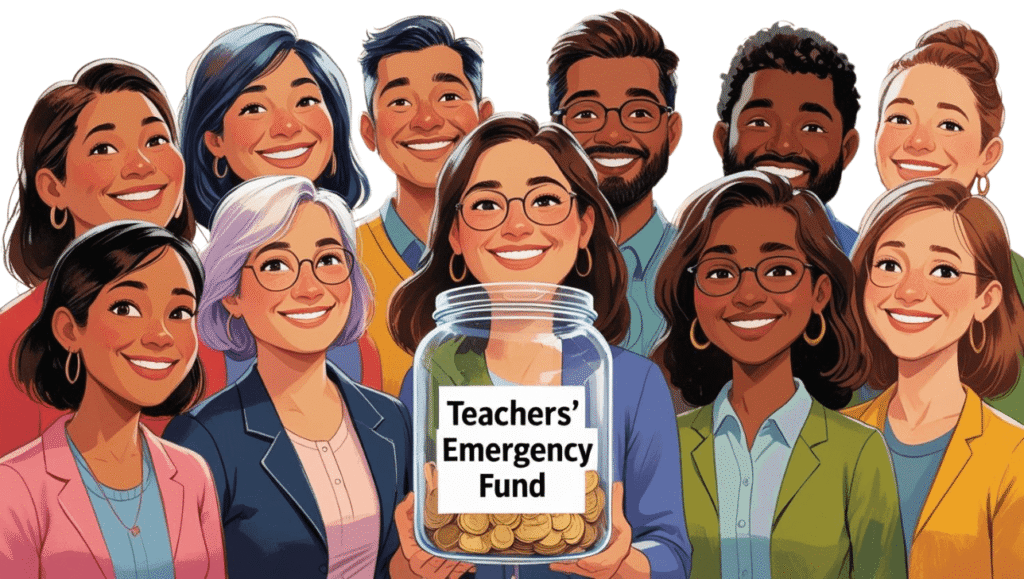Table of Contents
ToggleValue of Money for Kids: 10 Timeless Lessons I Hoped Ipshita and Dhruv Would Carry With Them

Value of Money for Kids: What Stays in Their Heart When You Can’t Hold Their Hand
One day, our children will leave home. For school. For college. For life.
They will walk into new cities, new friends, and new responsibilities. They will make decisions — big and small — without us standing next to them.
We won’t always be there to guide their spending, their saving, or their everyday choices. We won’t always be there to remind them when to say no, when to think twice, or when to hold back.
But something should travel with them — something that can quietly protect them when we cannot.
👉 The value of money for kids.
Money lessons that stay. Money habits that grow quietly with them. Money wisdom they should always carry in their heart — wherever they go.
This is what Ipshita and Dhruv should carry as they walk ahead into the world.
When Dhruv and Ipshita Walk Away, These Lessons Should Walk With Them
When Dhruv left for his hostel, we packed his books, his clothes, his dreams — but did we pack his money lessons?
When Ipshita moved to her coaching centre, we sent her with love, support, and reminders to study — but did we send her with reminders to handle money carefully?
Their bags were full.
But their life lessons?
Some may have been missing.
👉 The value of money for kids isn’t carried in luggage. It’s carried in habits.
The world outside will offer them temptations, pressures, and distractions. We won’t always be there to warn them, but something else should stand by their side — their money wisdom.
The lessons they should carry will be their quiet guardian, their second wallet, their silent protection. And these lessons should walk with them, wherever life takes them.
10 Money Lessons Kids Should Carry for Life
1. The Power of Saying No
One of the strongest shields our children can carry is the ability to say no.
- No to peer pressure.
- No to unnecessary spending.
- No to showing off.
The world will often ask them to spend beyond their means, to buy what they don’t need, to prove themselves through things.
But they should carry the quiet confidence that saying no isn’t weakness — it’s wisdom.
👉 Their “No” will protect their future before it protects their wallet.
2. A Personal Emergency Fund
Every child should carry a small emergency fund — even if it’s just ₹500.
- Not to spend.
- Not to flaunt.
- But to remind them that life’s surprises need preparation.
It’s not about the amount. It’s about knowing they can stand tall when small emergencies knock.
👉Even a simple envelope can become their safety net.
3. The Habit of Tracking Money
Money leaves quietly when no one is watching. Kids should carry the habit of tracking their money — not just to calculate, but to respect it.
- A notebook.
- A phone app.
- Even simple handwritten lists.
What is tracked is respected. What is respected, lasts. This habit should walk beside them every day.
4. The Weight of Earning
Kids should carry the experience of earning, even if it’s small. Even ₹50 earned by themselves carries more weight than ₹500 given by others.
👉 The day they earn their first rupee, their relationship with money changes.
Earning teaches effort. Earning teaches patience. Earning teaches value.
They should carry this lesson early.
5. The Habit of Starting Small SIPs
A good habit can become their life partner. Kids should carry the habit of starting SIPs — not when they start earning, but when they start saving.
👉 Even ₹500 SIP from pocket money is enough.
It’s not about how much.
It’s about how long.
This small habit can grow into a future they will one day thank themselves for.
6. The Wisdom That Debit Cards Are Not Magic
Swiping is easy. Forgetting the limit is easier. Kids should carry the wisdom that debit cards are not magic cards.
👉 Digital money feels weightless, but it carries real weight.
Money, whether in cash or on screen, finishes if not respected. This wisdom should stay in their pocket like a silent alarm.
7. The Skill of Smart Shopping
Smart shopping is a life skill, not just a money skill.
Kids should carry the ability to:
👉 Compare prices
👉 Check quality
👉 Question offers
👉 Make mindful choices
Good spending habits are built in small street shops long before they are tested in malls. They should carry this sharpness into every purchase.
8. The Strength to Avoid Group Money Traps
Kids should carry the courage to walk away from expensive group plans.
👉 To say, “I can’t afford this right now,” is not shame. It’s strength.
True friends will stay. Fake friendships will dissolve.
They should carry this confidence through school, college, and beyond.
9. The Comfort to Talk About Money
Money should never be a secret or a scary topic.
Kids should carry the comfort to talk about money openly:
👉 How to plan pocket money
👉 How to manage small budgets
👉 How to build tiny savings
When money conversations start early, money worries stay away later. This openness should always travel with them.
10. The Gratitude Behind Every Rupee
Kids should carry gratitude — because gratitude builds respect.
👉 Every pocket money allowance comes from someone’s time, effort, and sweat.
Gratitude controls overspending.
Gratitude builds responsibility.
Gratitude teaches that nothing comes for free.
They should carry this feeling close to their heart — always.
Final Reflection: The Lessons That Should Walk Beside Them
One day, Dhruv and Ipshita will walk into a world where Usha and I, as parents, cannot always step in.
They will make choices we cannot control. They will face challenges we cannot solve. Their life, their decisions, their mistakes — they will fully own them.
But something can still walk with them.


The Value of Money for Kids is not just about savings or spending. It’s about building life habits that stay with Dhruv and Ipshita — even when we can’t.
These lessons will not sit silently in their wallets. They will live deeply in their hearts.
They will guide them, protect them, and whisper to them — even when Usha and I are not there.

People Also Ask
1.👉 How to Explain the Value of Money to Kids?
Start with simple lessons: saving, tracking, and saying no. Let’s build these habits together
2.👉 How Do You Teach Students the Value of Money?
Start with real-life habits: tracking expenses, saving small amounts, and understanding needs vs. wants. Let’s build these lessons together — DM me to get started!
3. 👉 How to Teach Small Children About Money?
Start early. Start simple. Use pocket money, saving jars, and story-based money lessons. DM me — let’s build smart money habits from day one!
4. 👉 Why Should Kids Learn the Value of Money?
Because smart money habits protect them when you can’t. Early lessons build lifelong confidence. DM me — let’s start their money journey today!
We can’t always hold their hand, but we can build the habits that walk with them. Let’s create their first SIP, their first emergency fund, and their first money notebook — now.
📩 DM me today — Let’s start teaching our children the Value of Money for Kids before life teaches them the hard way.
👉 Follow me: For more stories, tips, and simple steps to grow financial habits in children.
👉 Read More:
1.Money Saving Tips: 7 Budgeting Tips for Teachers I Learned from My Silent Staffroom Struggles
2. Loan for Students – 5 Honest Lessons from a Family’s Financial Talk



